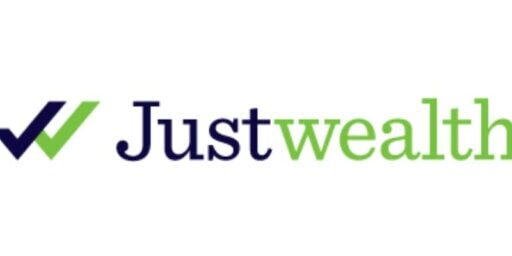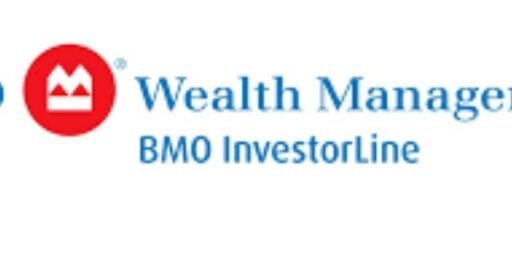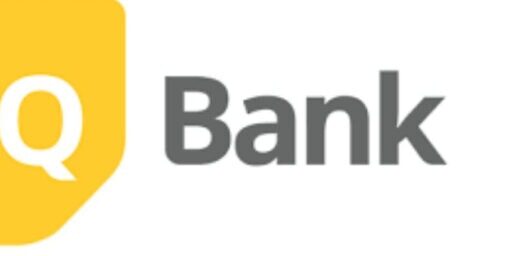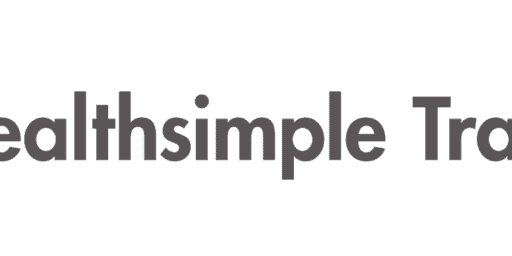Vanguard vs. iShares All-in-One ETFs
All-in-one ETFs are giving robo advisors a run for their money with their ease of use and low fees. All-in-one ETFs contain multiple ETFs, which means in one single purchase, you are essentially getting an entire well-balanced and hugely diversified portfolio at the tap of a button.
There are many Canadian all-in-one ETFs to choose from, and Vanguard and iShares are some of the best. They top our list because of their diversification, automatic rebalancing, good mix of stocks and bonds, and low management fees.
To be honest, they are both great choices, and aren’t vastly different. iShares will give you a slightly lower MER and Vanguard beats iShares in the number of all-in-one ETFs you can choose from as well as offers a bit more exposure to US bonds and emerging markets.
In this Vanguard vs. iShares All-in-One ETFs comparison, we’ll have a look at their holdings, fees and more so you can understand how they differ and which might be the next best investment for you.

Are You Saving Enough for Retirement?
Answer your retirement savings questions with 4 Steps to a Worry-Free Retirement. The first online course for Canadian retirement.
Try Worry Free Retire with 100% Money Back Guarantee
Vanguard All-in-One ETFs
Here are the three Vanguard ETFs straight from the Vanguard website. They each have a MER of 0.25%.
Vanguard ETF | Investment objective | Ticker | Strategic asset allocation |
seeks to provide a combination of income and some long-term capital growth by investing in equity and fixed income securities. | VCIP | 20% equity / 80% fixed income | |
Seeks to provide a combination of income and moderate long-term capital growth. | VCNS | 40% equity / 60% fixed income | |
Seeks to provide long-term capital growth with a moderate level of income. | VBAL | 60% equity / 40% fixed income | |
Seeks to provide long-term capital growth. | VGRO | 80% equity / 20% fixed income | |
seeks to provide long-term capital growth by investing primarily in equity securities | VEQT | 100% equity | |
seeks to provide a balanced mix of income and capital growt | VRIF | 50% equity/50% fixed income |
iShares All-in-One ETFs
As you can see from the table below, even the ticker symbols are similar! However, these iShares ETFs are cheaper with a 20% MER, .04% less than Vanguard’s all-in-one ETFs.
It’s a great time to be an investor where you can build a completely hands-off indexed portfolio by purchasing a single ETF and paying only 0.20% in fees. It can get even cheaper if you go with a discount brokerage that offers commission-free ETF purchases.
The biggest difference that I can see right now is that iShares does not offer a conservative portfolio (like Vanguard above), but they go head to head in the balanced and growth portfolios.
iShares ETF | Investment objective | Ticker | Strategic asset allocation |
The Fund seeks to provide long-term capital growth and income by investing primarily in one or more exchange-traded funds. | XCNS | 40% equity / 60% fixed income | |
The Fund seeks to provide long-term capital growth and income by investing primarily in one or more exchange-traded funds that provide exposure to equity and/or fixed income securities. | XINC | 20% equity / 80% fixed income | |
The Fund seeks to provide long-term capital growth and income by investing primarily in one or more exchange-traded funds managed by BlackRock Canada or an affiliate that provide exposure to equity and/or fixed income securities. | XBAL | 60% equity / 40% fixed income | |
The Fund seeks to provide long-term capital growth by investing primarily in one or more exchange-traded funds managed by BlackRock Canada or an affiliate that provide exposure to equity and/or fixed income securities. | XGRO | 80% equity / 20% fixed income | |
The Fund seeks to provide long-term capital growth by investing primarily in one or more exchange-traded funds managed by BlackRock Canada or an affiliate that provide exposure to equity securities. | XEQT | 100% equity |
Are you paying fees on ETF purchases?
If you do, sign up with Questrade to enjoy commission free trading on all in one ETFs.
Comparing Holdings
Below you can find detailed comparisons of various selected ETFs by both companies.
XBAL vs. VBAL
Comparing the holdings of these two leading ETF providers show that there is little difference in the exposure and holdings. With XBAL, you’ll get slightly more exposure to the US market and slightly less exposure to Canada. In the grand scheme of things, that may not be a bad thing since Canadians have a tendency to have a home bias (myself included).
With VBAL, you’ll get slightly better diversification with your bonds portfolio with exposure to the US and global bonds. However, XBAL gives you more exposure to corporate bonds. With only a 0.04% difference in MER, it’s a tough choice, but if I were to start a portfolio today, it would lean towards XBAL.
| Allocation | XBAL | VBAL |
|---|---|---|
| Canada | XIC ISHARES S&P/TSX CAPPED COMPOSITE I 15.10% | VCN Vanguard FTSE Canada All Cap Index ETF 18.21% |
| US | ITOT ISHARES CORE S&P TOTAL U.S. STOCK 27.79% | VUN Vanguard US Total Market Index ETF 25.69% |
| International | XEF ISHARES MSCI EAFE IMI INDEX 15.23%
IEMG ISHARES CORE MSCI EMERGING MARKETS 2.93% | VIU Vanguard FTSE Developed All Cap EX North America Index ETF 12.14%
VEE Vanguard FTSE Emerging Markets All Cap Index ETF 4.47% |
| Canadian Bonds | XBB ISHS CORE CAD UNIV BND IDX ETF 24.61%
XSH ISHARES CANADIAN SHORT TERM CORPOR 6.25% | VAB Vanguard Canadian Aggregate Bond Index ETF 23.25% |
| US/International Bonds | USIG ISHARES BROAD USD INVESTMENT G 3.87%
GOVT ISHARES US TREASURY BOND ETF 3.87% | VBG Vanguard Global ex-US Aggregate Bond Index ETF CAD-hedged 8.26%
VBU Vanguard US Aggregate Bond Index ETF CAD-hedged 7.92% |
XGRO vs. VGRO
Comparing the iShares and Vanguard all-in-one growth ETFs, again, there are slight differences. iShares gives you more US equity exposure (36.5% vs 31%) and less Canadian equity (20.51% vs 23.2%). Vanguard, on the other hand, gives you better global exposure to bonds. However, this is less important as bonds are only 20% of these portfolios.
Both are strong portfolios, but I like that XGRO has slightly greater global equity exposure. Read our VGRO review for the full details.
| Allocation | XGRO | VGRO |
|---|---|---|
| Canada | XIC ISHARES S&P/TSX CAPPED COMPOSITE I 19.98% | VCN Vanguard FTSE Canada All Cap Index ETF 24.11% |
| US | ITOT ISHARES CORE S&P TOTAL U.S. STOCK 36.77% | VUN Vanguard US Total Market Index ETF 34.69% |
| International | XEF ISHARES MSCI EAFE IMI INDEX 20.15%
IEMG ISHARES CORE MSCI EMERGING MARKETS 3.87% | VIU Vanguard FTSE Developed All Cap EX North America Index ETF 16.22%
VEE Vanguard FTSE Emerging Markets All Cap Index ETF 5.83% |
| Canadian Bonds | XBB ISHS CORE CAD UNIV BND IDX ETF 12.21%
XSH ISHARES CANADIAN SHORT TERM CORPOR 3.10% | VAB Vanguard Canadian Aggregate Bond Index ETF 11.34% |
| US/International Bonds | USIG ISHARES BROAD USD INVESTMENT G 1.92%
GOVT ISHARES US TREASURY BOND ETF 1.92% | VBG Vanguard Global ex-US Aggregate Bond Index ETF CAD-hedged 3.96%
VBU Vanguard US Aggregate Bond Index ETF CAD-hedged 3.85% |
VEQT vs XEQT
Much like the comparisons above, there are more similarities than differences when it comes to the all-equity all-in-one options from iShares and Vanguard. iShares continues to give a little more weight to the USA exposure over the Canadian side of things, with virtually equal weighting given to the international scene.
What it essentially boils down to here is whether you like the extra diversification of the US market versus the steady-as-she-goes world of Canadian equities. You can read our detailed XEQT review or VEQT review for more details on each.
| Allocation | XEQT | VEQT |
| Canada | XIC ISHARES S&P/TSX CAPPED COMPOSITE 24.9% | Vanguard FTSE Canada All Cap Index ETF 30.4% |
| US | ITOT ISHARES CORE S&P TOTAL U.S. STOCK 44.74% | Vanguard US Total Market Index ETF 42.11% |
| International | XEF ISHARES MSCI EAFE IMI INDEX (25.21%)EMG ISHARES CORE MSCI EMERGING MARKETS (4.93%) | Vanguard FTSE Developed All Cap ex North America Index ETF (19.97%)Vanguard FTSE Emerging Markets All Cap Index ETF (7.52%) |
I’m not going to bother going into detail on the new ultra-conservative all-in-one ETFs from both companies, because there are very few differences between them as they are essentially basic income-generating portfolios. I honestly think I’d rather just opt to place my money in a high interest savings account at EQ Bank as opposed to bothering with either option.
Are you paying fees on ETF purchases?
If you do, sign up with Questrade to enjoy commission free trading on all in one ETFs.
iShares vs Vanguard All-in-One ETFs FAQ
Can I buy iShares or Vanguard ETFs through Questrade or Virtual Brokers?
Yes! And you will pay exactly $0 to do so! (There are small fees applicable when you sell these ETFs, but most investors won’t be doing that for 20+ years – when they will represent a very minimal fee for your overall portfolio.)
Are iShares and Vanguard ETFs as Good as Robo Advisors?
Both iShares and Vanguard ETFs use the same passive index investing strategy as the main robo advisors. In some cases, the underlying ETFs are even exactly the same! The differences come in terms of price and investor help. You’ll pay a little bit more to use a robo advisor (roughly .3% more) but you’ll also have access to more advice should you need it.
Are All-in-One ETFs Safe?
No investment is ever “safe” when it comes to risk-proof returns. All equity and bond investments will go up and down with the markets. That said, using a discount brokerage to purchase these ETFs is extremely safe from a fraudulent or theft situation. Also, instantly diversifying your investment dollar into thousands of companies and bonds from around the world, your money is statistically much safer from a dramatic investment loss than it could be in a mutual fund, or a few hand-picked stocks.
Is It Easy and/or Simple to Invest With Vanguard or iShares All-in-One ETFs?
Yes! After you setup your online broker account, you can literally commit less than 30 minutes per year to your investment portfolio using these products. If you simply decide on your risk level, and then purchase the corresponding all-in-one ETF, you will beat the returns of the vast majority of investors out there – simply by not doing psychologically-destructive things to your portfolio! Every few months, you simply transfer money from your bank account to your discount brokerage account, then log in, purchase your one ETF, and log out again. It is that simple.
Are you paying fees on ETF purchases?
If you do, sign up with Questrade to enjoy commission free trading on all in one ETFs.
Final Thoughts
All things considered, an all-in-one portfolio ETFs are definitely great investments for those that crave a fully passive investment strategy.
Both Vanguard and iShares all-in-one ETFs offer excellent geographic and sector diversification, having thousands of stocks and bonds included as part of the package. Throw on top of that low MERs, free trading if you have a brokerage account with a discount broker that offers commission-free ETFs, and automatic rebalancing, these ETF portfolios really have it all.
It will really come down to how much cutting costs to the bare minimum matters to you. With iShares, you’ll save 0.04% when compared to Vanguard. However, if you would like more of a US heavy selection of ETF portfolios, Vanguard may be more suitable.
If you would like to find out more about All-in-One ETFs, check out our article on The Best All-in-One ETFs in Canada. If you prefer the idea of choosing your own ETFs rather than an all-in-one ETF portfolio, head to our write up on the 45 Best ETFs in Canada.
Ready to make your first all-in-one ETF purchase? Check out our reviews of Questrade, Qtrade or Virtual Brokers, all of which offer free ETF purchases.
I've Completed My Million Dollar Journey. Let Me Guide You Through Yours!
Sign up below to get a copy of our free eBook: Can I Retire Yet?











Hi there!
I’m trying to decide which one I’m gonna buy in 2020… and I compared the performance of VGRO, XGRO and ZGRO from the past year… from February 19 2019 to January 9 2020.
This does not include the distributions (which is practically the same)… only the performance. Here are my findings :
ZGRO : 9.5%
XGRO : 9.1%
VGRO : 8.8%
According to these numbers, I think I would go with XGRO, but it seems that more investors are going with Vanguard (more volume)… Am I missing something here?
Best regards,
Fred
Hi Fred,
These annually returns are completely irrelevant. I know that’s a weird thing to say, but it’s 100% true. The small difference in these returns is attributable to small differences in the underlying asset mix and probably a slight tracking error as well. The respective asset mixes will return slightly different gains or losses each year, but we have no way of knowing which will win out year to year. Consequently, the best bet is simply to diversify your portfolio and go do more important stuff in life! Pick one and be satisfied that your investment dollar is spread out over thousands of investments all over the world.
Further to Kyle’s point, which one you choose will probably depend on what discount brokerage you are using. For example, in a Qtrade account, XGRO is commission free and can be set up for a DRIP at no cost. While some discount brokerages offer commission free trading on all ETFs, if your current account already qualifies for no annual fees, and has at least one of them on their commission free list, you can’t really go wrong just taking the easy choice when everything else is so close.
Hi FT,
I am 24 years old and I am really hoping to step foot in the investment world this year. Right now, I have a TD balanced mutual funds for about $13000 and I am thinking of switching it to a higher return product such as the VGRO.
Also, after putting aside an emergency fund, I have another $10000 to add onto my portfolio. So, my question is does it matter what time I sell my mutual funds? Also, how long should we hold ETFs for? Are they good until retirement? If so, what are some short time investment that you would recommend (3-5 years?) for people around my age?
Thank you so much!
Kay
Hi Kay,
Do you know what MER you are paying for your TD funds? In terms of timing, it doesn’t really matter when you sell your funds to switch to ETFs. The goal is to buy and hold forever (mutual funds and/or ETFs) but you may need to increase your bond allocation as you get older. But for right now, VGRO/XGRO should be fine.
This article may help as well:
https://milliondollarjourney.com/a-simple-low-cost-diversified-etf-portfolio.htm
Beware, iShares’ real cost is deceiving. ie today, XGRO has a MER of 0.84% + TER of 0.07% for a total expense of a whopping 0.91%. VGRO has a MER of 0.22% and a total expense of 0.25%.
Since iShares switched their CBN ETF to xgro, xgro inherited the printed mer. Since mer is not calculated until one year after (like filing taxes), we do not know the true mer for xgro but it ‘should’ be around 0.21%. The part that I need to look into further is how CBN had a management fee of 0.18% but then had a mer of 0.80%.
Hard to find a US currency balanced ETF available in Canada. Lots of mutual funds but no ETFs.
I would prefer to keep the account in US Dollars. Something similar to VBAL.
Any suggestions
You can basically get the same equity coverage with Vanguard VTI and VXUS. If you need bonds, you would need to add a bond ETF to that mix. You can get a US bond index: BND, or global bond index: BNDX. More ETFs here:
https://investor.vanguard.com/etf/list#/etf/asset-class/month-end-returns
Hi,
I’m 37. I’m balanced type. I have 25k celi, 40k reer and 15k reee (kid 8). Should I put everything in VBAL? Or mixed with VGRO or something else?!
Thanks!
Hi Kat, very challenging to give you a definitive answer as everyone has different risk tolerance. But if I’m interpreting the “balanced” type correctly, then VBAL might be a better fit.
Hi, I’m 50 years old with $275,000 in the bank, $66,000 maxed out in a regular TFSA account and own my own home with precarious contract employment prospects lying ahead down the road. I’ve never really invested before. I was thinking of opening a TFSA account at Questrade and putting the entire $66000 in VGRO or VEQT and hope for the best in 20 years. Is that too simplistic of a view? Just looking for some straight forward advice. Thanks
RKB, I would look at your entire portfolio to help decide which investment strategy to go with. When do you plan on retiring? Do you have a pension with your employer? What is your risk tolerance? Can you sleep at night with a volatile market? At 50, and a traditional retirement at 65, you may want to look at more balanced products like VBAL, XBAL, or ZBAL that have 60% equity and 40% fixed income. If you already have a defined benefit pension (which acts like fixed income), then you may want to get more aggressive and go with VGRO/XGRO/ZGRO. At least that is my opinion.
Hi, thanks for the reply. I’m on my own without a pension and have no set retirement age. However, I’m debt free with only typical living expenses to account for. I just thought putting my entire TFSA balance into a growth ETF like Vanguard’s new all equity VEQT and contributing the max amount each year would compound nicely over the next 20-25 years while still having cash on hand. I might not like it but would accept the volatility while the goal takes precedence. After the sale of some real estate, combined with the above, I should end up with around $400,000 – $450,000 that I could use to contribute the max amount to the TFSA each year. This represents my entire net worth and am trying to keep things simple from this point on. I was also thinking that since VEQT is just a couple of months old of buying in with the full TFSA amount that I have all at once (no dollar cost averaging). Thanks again
Hi RKB,
I think you are in good shape, and it sounds like you already know your risk tolerance. Also, another thing to keep in mind is that you will likely be eligible for other sources of income during retirement.
Do you feel these sort of funds are better suited for smaller balances? I’ve heard John Hood on BNN say a few times, these are great for small accounts. What drawbacks of putting large amounts in VGRO? What are the alternatives?
These are good for smaller and larger balances IMO. What did John Hood say about investing for larger balances? What is considered a large balance?
I’ve only heard him reference a dollar amount once for small accounts and that was $35K, I believe. If someone is considering placing most or all of their RRSP into VGRO, this would be well above $35K and into the 6 digits.
Perhaps at a higher amount, it may be better to build your own portfolio without all the diversification of the ETFs???
Not sure what the logic is there. My advice would be to continue using index ETFs no matter the size of your portfolio. Of course, when portfolios/net worth gets really large, some decide to move into private equity/real estate etc, but a large part of market exposure should be indexed (imo).
The management fee of XGRO is listed on iShare’s website here and it’s 0.20%. The MER hasn’t been posted yet, but it shouldn’t be too much higher. https://www.blackrock.com/ca/individual/en/products/239447/ishares-balanced-growth-coreportfoliotm-fund
I’m a bit confused with the MER of XGRO, the Fact Sheet states it is 0.80% which seems a lot higher than VGRO at 0.25%?
I have the same question, the fact sheet does not show a better MER than VGRO.
If you look to the performance of all of them, you are better off with a GIS over 3%.
There are much better options in the market.
That’s not true at all. These are young funds, about a year old, and the past year has not been great for the market as a whole, so for sure the performance the last year hasn’t been great. But over the long term, there’s no comparison.
The 10 yr annualized return for VGRO would have been about 9% and for VBAL would have been about 7.8%. Over 20 yrs, they would have been identical at 5.2% annualized.